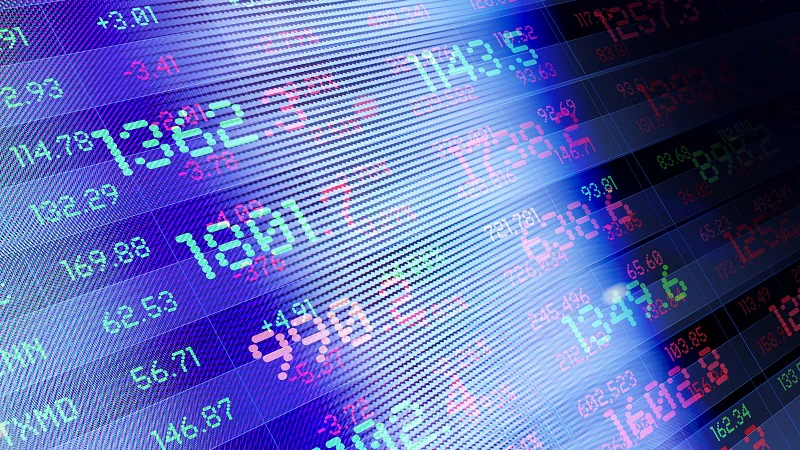Why European stocks are outperforming the US
European equity markets have had a strong start to the year, outperforming their peers on the other side of the Atlantic. Even after the rally, Goldman Sachs Research expects European equities to rise as much as 6% in the next 12 months. Strong fourth-quarter corporate earnings, higher defense spending, and a lack of direct tariffs targeting Europe from the US appear to have contributed to the surge in stocks from Paris to Frankfurt. Investors were not positioned for the strong performance, as evidenced by polling from Goldman Sachs conferences: A survey of more than 300 attendees at Goldman Sachs’ Global Strategy Conference in January found that 58% of participants expected US stocks to perform best in 2025. In contrast, only 8% thought that Europe would perform best, making it the least favored developed market. We spoke with Goldman Sachs Research Senior Strategist Sharon Bell about what might be behind the rally in European stocks and her forecast for the rest of this year. How much of Europe’s outperformance this year comes down to low expectations? Investors were very skeptical about Europe going into this year — on the economy, on the impact of Trump policies and tariffs, and on growth. Because markets had already priced in a fairly weak growth profile this year, Europe only had to perform in line with expectations (or slightly better) and it could do very well. The recent strong performance has been driven by proposals from Germany to spend more on infrastructure and defense, and in doing so bypass the restrictions of the debt brake. This is a huge change for Germany and for Europe, which has historically been reluctant to spend to boost growth. In addition, some of the strong performance is because the fourth-quarter company earnings season was reasonably good for Europe. And some of it is also that Europe so far hasn’t been targeted with tariffs by the US. Stocks have also risen because of the growing understanding that Europe will have to spend more on defense: If there’s no peace in Ukraine, Europe spends more on defense; if there is peace in Ukraine, Europe has to ensure that peace and therefore spend more on defense. Either way, Europe spends more on defense, which helps defense companies. How far has the valuation gap between US and European stocks closed? US equities were at extremely high valuations at the beginning of this year. The US market is down a bit, meaning that US valuations have also come down — although they’re still in the 90th percentile of their historical range. Meanwhile, European valuations have increased, and are now above the 50th percentile. Why is that? Because the European market, in absolute terms, has risen 10-12%, and earnings have not gone up — if anything, earnings-per-share estimates for this year are slightly down. The US has gone down a fraction, and Europe’s gone up a fraction. So that elastic band that got stretched very far between US valuations and European valuations has come back in a tiny bit. It’s still very stretched, though — not because Europe is very cheap, but because the US is still near historically high valuations. Is there more room for European stocks to rise? I do still see upside for the remainder of this year: Our 12-month target still has 5-6% upside. But the market’s already up 10-12% since the start of the year, so I feel we’ve already had a lot of the returns on European equities. Markets move in front of data and economic news. The economic news for 2026 and 2027 has got better for Europe: Our economists now expect German real GDP to expand 2% in 2027, mostly because of more government spending. That’s a large change from a flatlining economy in recent years. But the market priced that news in quite quickly. It could be, because markets are volatile, that stocks come down a bit, get to a lower base, and then rally again. I do see a little bit of medium-term upside, because I think we’ll have positive earnings growth for the next few years, but that growth is unlikely to be very strong for Europe. We’ve seen some early signs that could indicate weaker US economic growth. How could that impact European equities? I think part of the sell-off that we’re seeing at the moment in US equities is a reflection of people reassessing the impact of this trade policy uncertainty. And it does look like it’s quite negative so far for the US economy — particularly for the consumer. We’ve seen consumer survey data on inflation expectations zoom up in the US. Around a quarter of European companies’ exposure is to the US. So in the end, if the US economy is not growing as fast as people expect, then Europe won’t export as much to the US. Many of the European companies with direct exposure to the US aren’t really exporters — they don’t produce in Europe and then send over to the US — instead, many of them actually own US businesses or divisions. So in a sense, there’s two ways in which weaker US economic growth would hit European companies: It would affect exporters themselves (and that in turn impacts European GDP), and it would also hit European companies with US businesses. Having said all of that, we still expect reasonably healthy US growth this year. And if growth does weaken further, then with interest rates at the level they are, there’s always potential to soften financial conditions by bringing rates down. We don’t expect a recession in the US, but a slightly softer patch of growth is not so good for European companies, either. What sectors look well positioned for growth in Europe? Defense stocks have done extremely well recently. A basket of European defense stocks is up 67% since the start of this year (as of March 6). But that strong performance is partly based on future expectations. I think those stocks will probably
Why European stocks are outperforming the US Read More »




